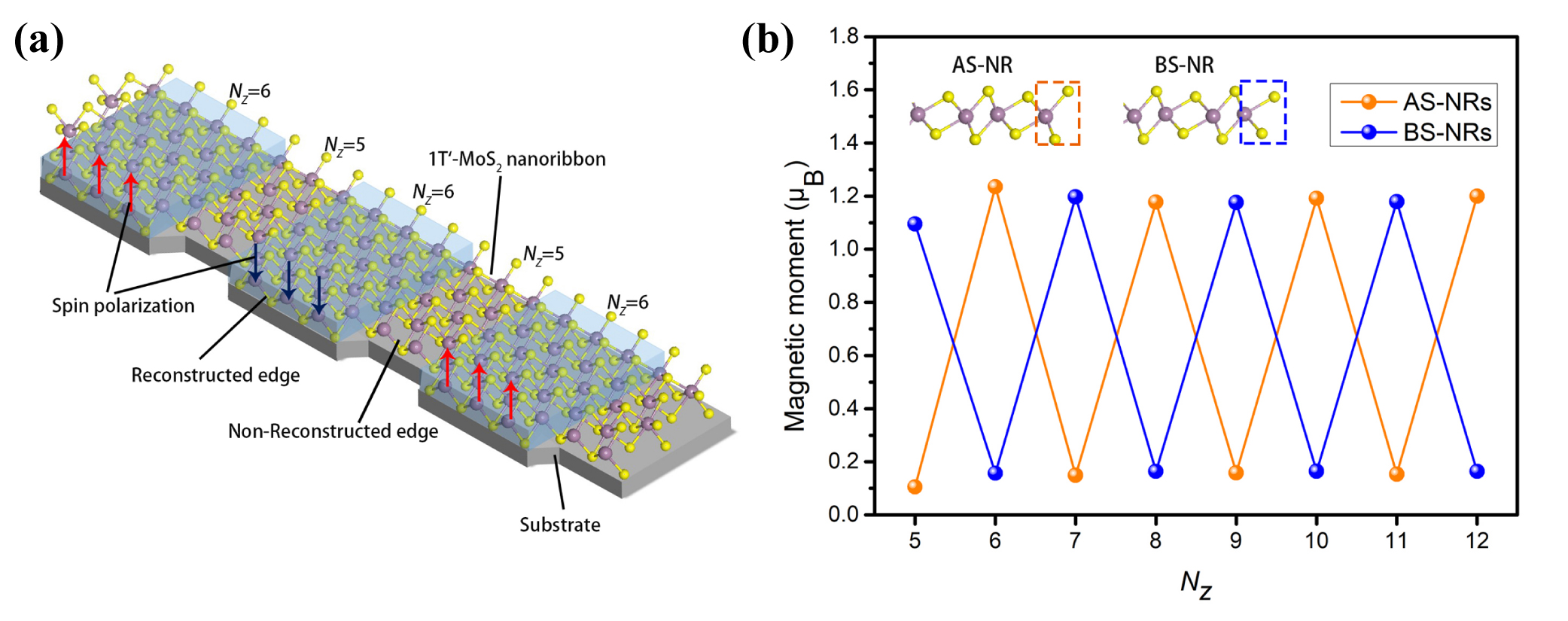Two-dimensional transition metal chalcogenide (TMD) is a graphene-like materials with sandwich layered structures, leading to direct band gap, strong spin-orbit coupling, piezoelectricity and other physical properties. After the rise of graphene, TMDs have been one of most popular materials with broad application prospects. At present, the researches on two-dimensional TMDs mainly focus on their 2H phase structure. Interestingly, besides 2H phase structure, many TMDs have 1T and 1T' phase structures which exhibit some much more excellent physical and chemical properties (such as catalytic property) further expanding their potential applications. However, there is still lack in-depth study on the relevant physical properties of these phases and their potential applications. For 1T' phase, the smallest structural unit can be regarded as the combination of two distinguished unit cells. When edges of two-dimensional 1T’ TMDs exists, they will have a variety of atomic edge configurations, which is expected to induce rich physical properties at the edges.

(a) Prototype of an ultra-high-density magnetic memory device by manipulating the width of the 1T'-MoS2 nanoribbon; (b) Oscillation of magnetism of 1T'-MoS2 nanoribbon as its width changing.
Recently, A/Prof. Junkai Deng and Engineering and Prof. Sen Yang of Xi’an Jiaotong University, collaborated with A/Prof. Zhe Liu of The University of Melbourne in Australia, predicted a ferromagnetism oscillation as the change of 1T’-MoS2 nanoribbon width between odd and even unit numbers using first-principles calculations. This novel magnetic oscillation effect is firstly discovered in two-dimensional TMDs, which is only related to nanoribbon width. The researchers named this effect as "magic number of magnetism". Based on this effect, they proposed a novel prototypic device by controlling the width of the different segments in one piece of nanoribbon to alternate edge ferromagnetism. Since the smallest unit of edge ferromagnetic can be stabilized on atomic-scale lattices, this device prototype is expected to develop and design ultra-high-density magnetic memory materials (devices). This work provides a fresh idea for functional application of two-dimensional TMDs materials.
This research was recently published in an international top journal, Journal of the American Chemical Society (JACS, IF=14.357), with the title of "Ferromagnetism of 1T'-MoS2 Nanoribbons stabilized by edge reconstruction and its periodic variation on nanoribbons width". It’s the fifth collaborative paper between A/Prof. Junkai Deng and A/Prof. Zhe Liu in the field of "2D Smart Materials" during past three years (2 in JACS, 1 in Nature Communications, 1 in PRB, 1 in APL). Xi'an Jiaotong University is the affiliation of first author and the first corresponding author in this paper. The first author, Kaiyun Chen, is a co-supervised Ph.D candidate by A/Prof. Junkai Deng and Prof. Sen Yang.
This work is supported by NSFC, 111 project 2.0, the China Postdoctoral Science Foundation and the Fundamental Research Funds for the Central Universities. This work is also supported by the State Key Laboratory for Mechanical Behavior of Materials and HPC platform of Xi’an Jiaotong University.
Paper link: https://pubs.acs.org/doi/abs/10.1021/jacs.8b09247


